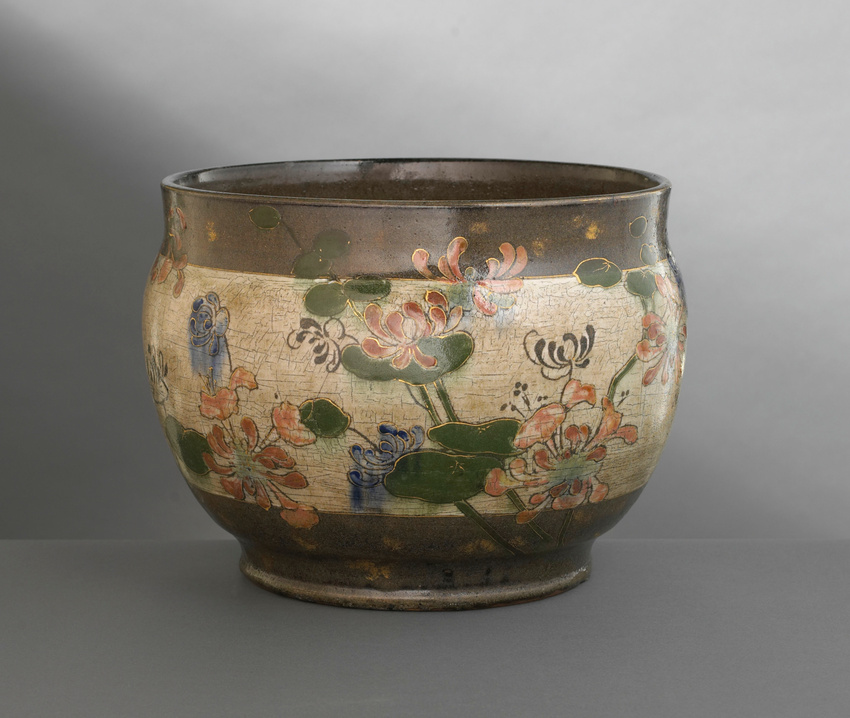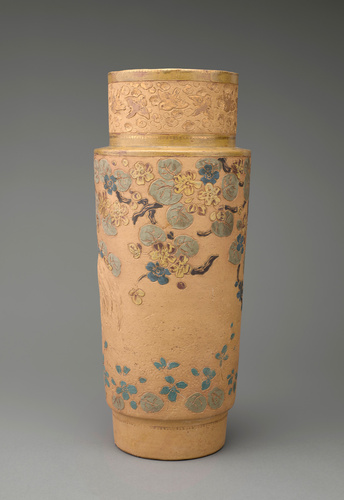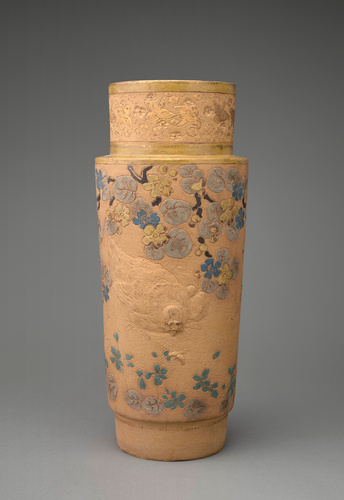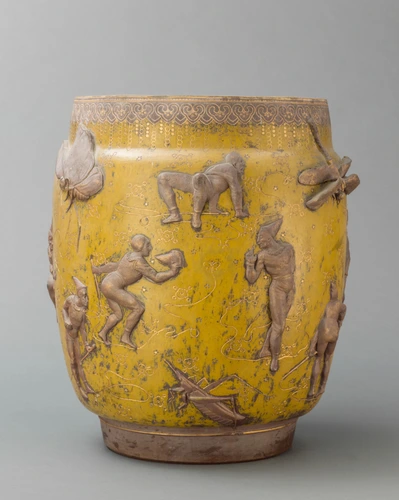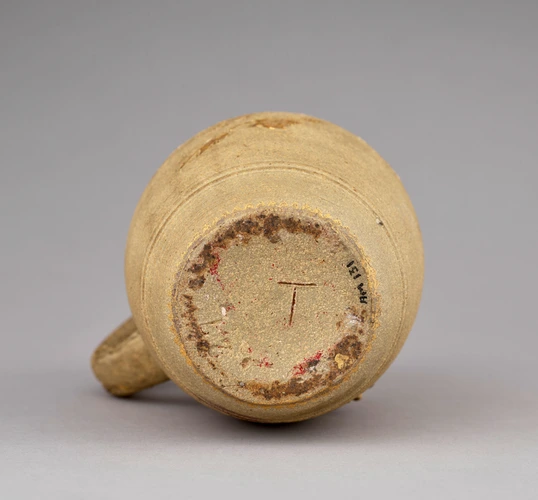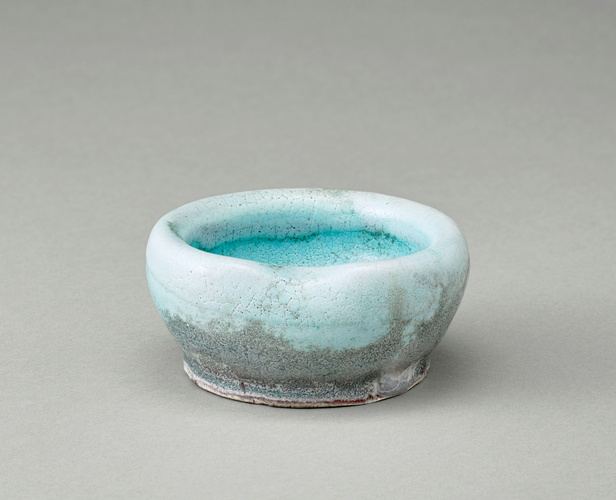Cache-pot
The technique and decoration of this piece place it in the late period (1885-1886) of the Paris studios of the manufacturer Haviland, which had been under the direction of Ernest Chaplet since 1882. This production is characterised by the abandonment of rough textured brown stoneware in favour of enamelled stoneware, either partially or completely. The "Impressionist" or "Naturalist" representation of landscape and vegetation was abandoned in favour of a more arbitrary use of motifs. These often very Japanese motifs became increasingly stylised, with the aim of making them exclusively decorative.
This interpretation broke away completely from contemporary productions and heralded the creations of Art Nouveau. The fact that the piece does not bear the famous rosary mark which the ceramicist put on his pieces for Haviland, is conclusive proof that this was a personal piece. In all likelihood it was the result of research that Chaplet undertook as an independent artist, following on from experiments tried out while working for his employer.
